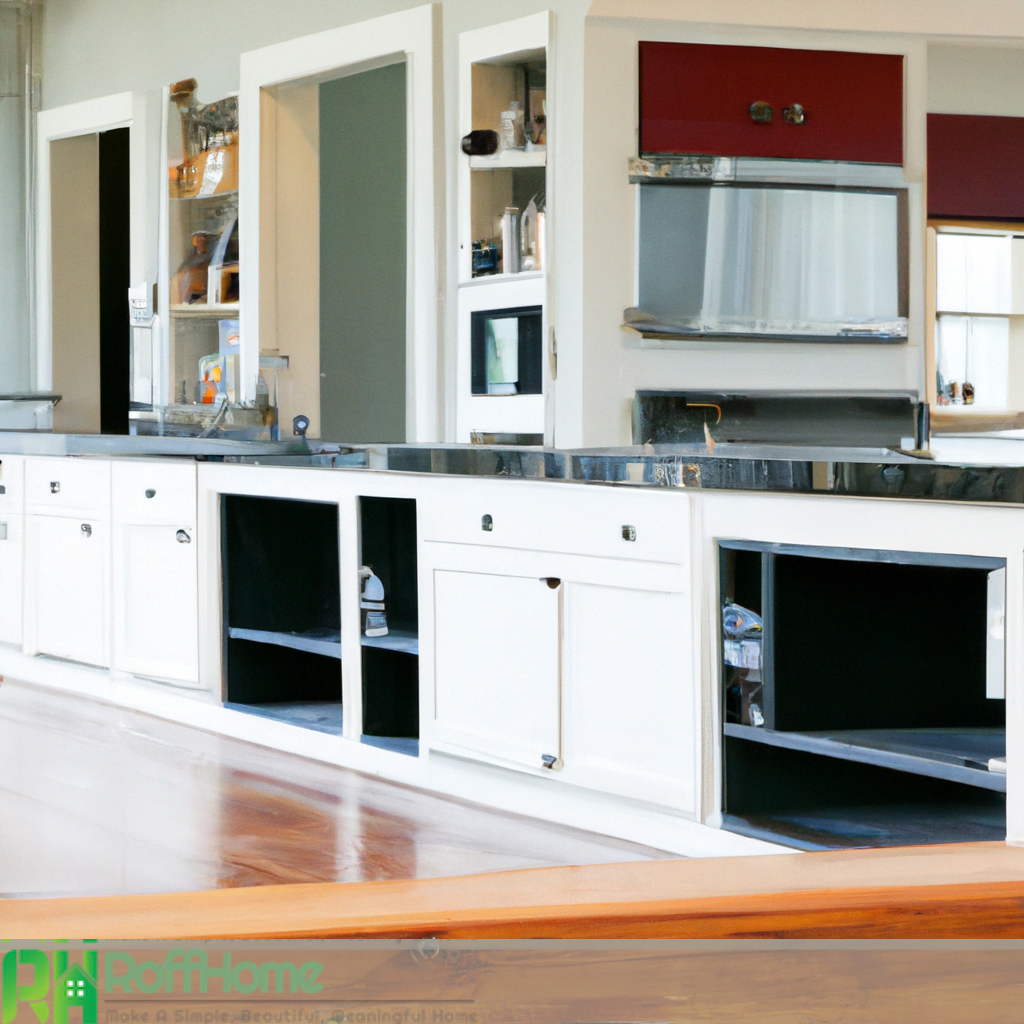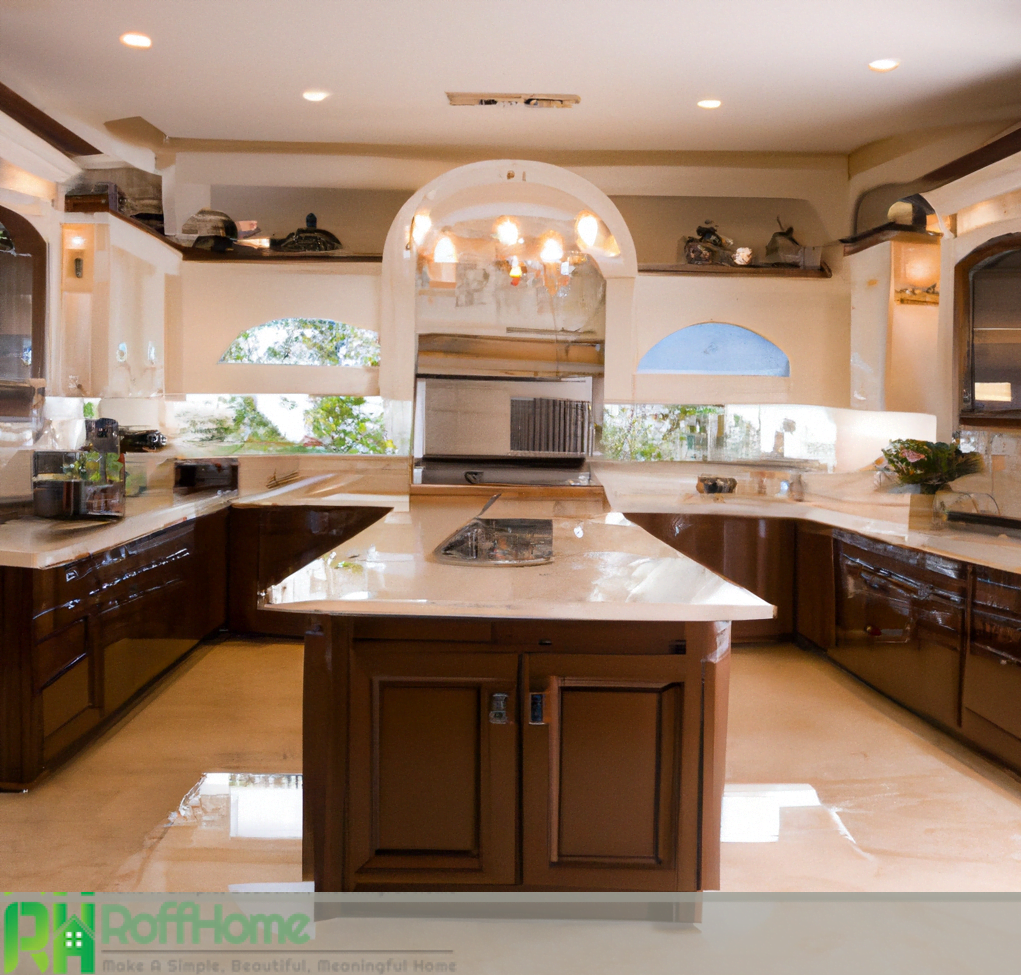Terracotta Floor Tiles Kitchen: Embrace Timeless Elegance for a Rustic Culinary Space
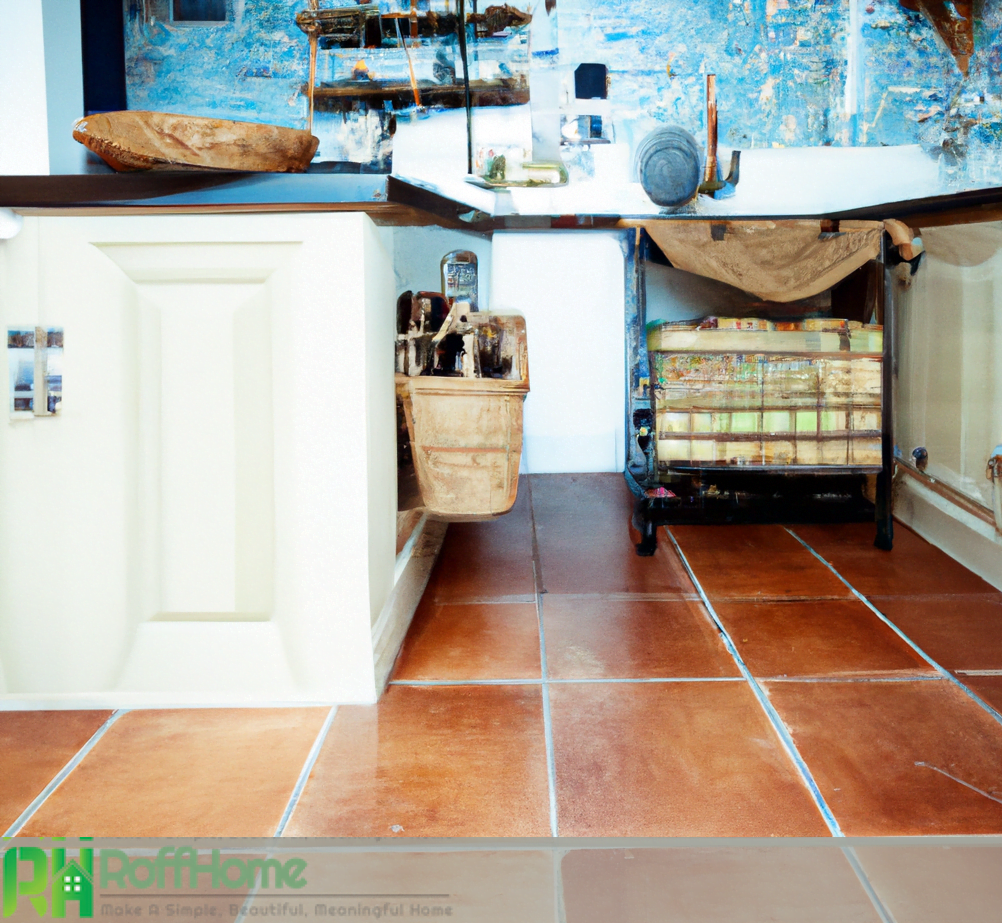
Terracotta floor tiles kitchen bring a touch of timeless beauty and natural warmth to any home. These unique flooring options have a rich history and continue to be famous for homeowners seeking a blend of durability, aesthetics, and functionality in their kitchen design. With their earthy tones and rustic charm, terracotta floor tiles effortlessly complement traditional and modern kitchen styles
The durability of terracotta floor tiles makes them an excellent choice for high-traffic areas such as the kitchen. Their sturdy composition allows them to withstand a busy household’s daily wear and tear, ensuring their longevity and minimizing the need for frequent renovation or remodeling. Furthermore, their natural composition makes them a sustainable choice for eco-conscious homeowners, as they are made from clay and other raw materials.
Maintaining and cleaning terracotta floor tiles is simple, requiring regular sweeping and occasional mopping. The unique texture of these tiles adds to their charm, but it’s essential to use appropriate cleaning methods and avoid harsh chemicals to preserve their natural beauty.
One of the most appealing aspects of terracotta floor tiles is the variety of patterns and layouts available. Homeowners can choose from traditional, geometric patterns for a classic look or more modern and contemporary designs that add a fresh touch to the kitchen decor. The versatility of terracotta floor tiles allows them to seamlessly blend into different kitchen styles, whether a cozy farmhouse kitchen or a sleek, Mediterranean-inspired culinary space.
A Brief History of Terracotta and Its Use in Kitchen Flooring
Terracotta, a type of clay-based ceramic, has a long and fascinating history that spans thousands of years. Its use in kitchen flooring dates back to ancient civilizations, making it one of the oldest known materials. The word “terracotta” originates from Italian, meaning “baked earth,” which aptly describes its creation process.
Terracotta was first utilized by the ancient Mesopotamians around 3000 BCE. They molded clay into various shapes and fired them in kilns, resulting in sturdy and durable tiles. The Egyptians also recognized the value of terracotta and used it extensively in their architecture, including kitchen floors.
The ancient Greeks and Romans further popularized terracotta as a versatile building material. In addition to its use in pottery and decorative items, terracotta tiles were commonly employed for flooring in kitchens and other living spaces. The warm, earthy tones of terracotta added a touch of elegance and natural beauty to their homes.
During the Renaissance period, terracotta tiles experienced a resurgence in popularity. Influenced by the architectural styles of ancient civilizations, such as the Greeks and Romans, craftsmen and artisans began using terracotta extensively in building projects. Kitchen flooring adorned with terracotta tiles became a symbol of sophistication and craftsmanship.
Terracotta’s association with Mediterranean cultures, particularly Italy and Spain, is noteworthy. Terracotta tiles’ warm and inviting nature is ideally suited to the Mediterranean climate and lifestyle. The use of terracotta in kitchen flooring became synonymous with the rustic and charming ambiance found in Mediterranean homes.
In recent years, the popularity of terracotta floor-tiles has seen a resurgence due to a growing interest in natural and sustainable materials. Homeowners are drawn to terracotta’s unique character and warmth in kitchen spaces. With advancements in manufacturing techniques, modern terracotta tiles offer improved durability and a more comprehensive range of designs and finishes.
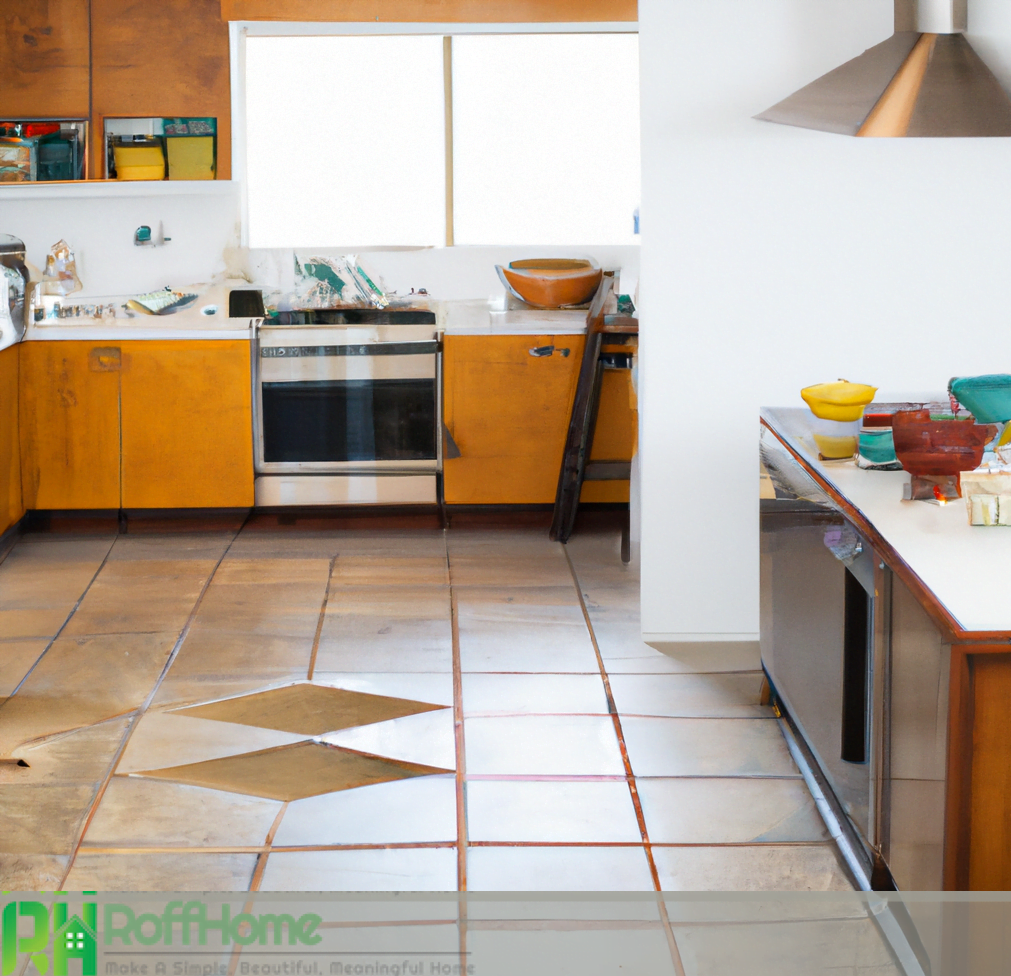
The Beauty and Elegance of Terracotta Floor Tiles Kitchen Design
Terracotta floor tiles bring a unique and captivating beauty to kitchen spaces, infusing them with warmth, elegance, and a touch of rustic charm. These tiles have long been revered for their natural aesthetic appeal and ability to enhance the overall design of a kitchen.
One of the defining features of terracotta floor tiles is their earthy tones. From warm reddish-browns to subtle oranges and yellows, these natural hues add depth and richness to the kitchen. The warm color palette of terracotta complements a wide range of kitchen styles, from traditional and farmhouse to Mediterranean and even modern designs.
In addition to their color, terracotta floor tiles boast a unique texture that adds visual interest and a sense of authenticity to the kitchen. Their slightly rough surface and subtle variations in shade and tone create a dynamic and inviting look. This distinctive texture adds character to the space and provides a pleasant tactile experience underfoot.
Terracotta floor-tiles have a timeless quality that transcends passing trends. Their enduring appeal makes them an excellent choice for homeowners who value longevity and classic design elements. Whether used in a historic home or a contemporary kitchen, terracotta tiles blend seamlessly with various design styles, enhancing the overall aesthetic effortlessly.
Another aspect that contributes to the beauty of terracotta floor-tiles is their ability to age gracefully. Over time, these tiles develop a unique patina and weathered appearance, further enhancing their rustic charm. This natural aging process adds depth and character to the kitchen floor, giving it a lived-in and authentic feel.
Furthermore, terracotta floor-tiles have a natural affinity for natural light. When sunlight filters through windows and illuminates the kitchen, the warm tones of terracotta come alive, creating a captivating play of light and shadow. This interaction between light and terracotta adds an ethereal quality to the space, making it vibrant and inviting.
Terracotta Floor Tiles vs. Other Flooring Options for the Kitchen
Choosing the right flooring for your kitchen is an important decision that affects the space’s aesthetic appeal and functionality. When considering flooring options, it’s essential to compare the characteristics and benefits of different materials. In this context, let’s compare terracotta floor tiles and other popular flooring options for the kitchen.
One primary consideration is durability. Terracotta floor tiles are known for their robustness and longevity. They can withstand the demands of a busy kitchen environment, including high foot traffic and the occasional dropped item. However, it’s important to note that terracotta tiles are porous and more prone to chipping or cracking than other flooring materials.
Another factor to consider is maintenance and cleaning. Terracotta floor tiles require regular sweeping and occasional mopping to keep them looking their best. While they are relatively easy to maintain, it’s essential to be cautious with the cleaning agents, as harsh chemicals can damage the tiles. On the other hand, materials like ceramic or porcelain tiles may require less maintenance and are often more resistant to stains and scratches.
Regarding design options, terracotta floor tiles offer a unique and rustic charm that can add character to the kitchen. They come in various earthy tones and can be laid in different patterns and layouts, allowing for customization and creativity. However, if you prefer a more modern or sleek look, materials like porcelain or engineered hardwood may offer a broader range of contemporary designs and finishes.
Comfort underfoot is another consideration. Terracotta floor tiles tend to be calmer and more complicated compared to materials like cork or vinyl, which can provide a more cushioned and comfortable surface. Additionally, terracotta has natural thermal properties that help keep the kitchen cooler in warmer climates.
Lastly, budget is an essential factor to consider. Terracotta floor tiles can vary in price depending on factors such as quality and sourcing. While they can be an investment, their durability, and timeless appeal make them a cost-effective choice in the long run. However, materials like vinyl or laminate may offer more budget-friendly options for those with cost constraints.
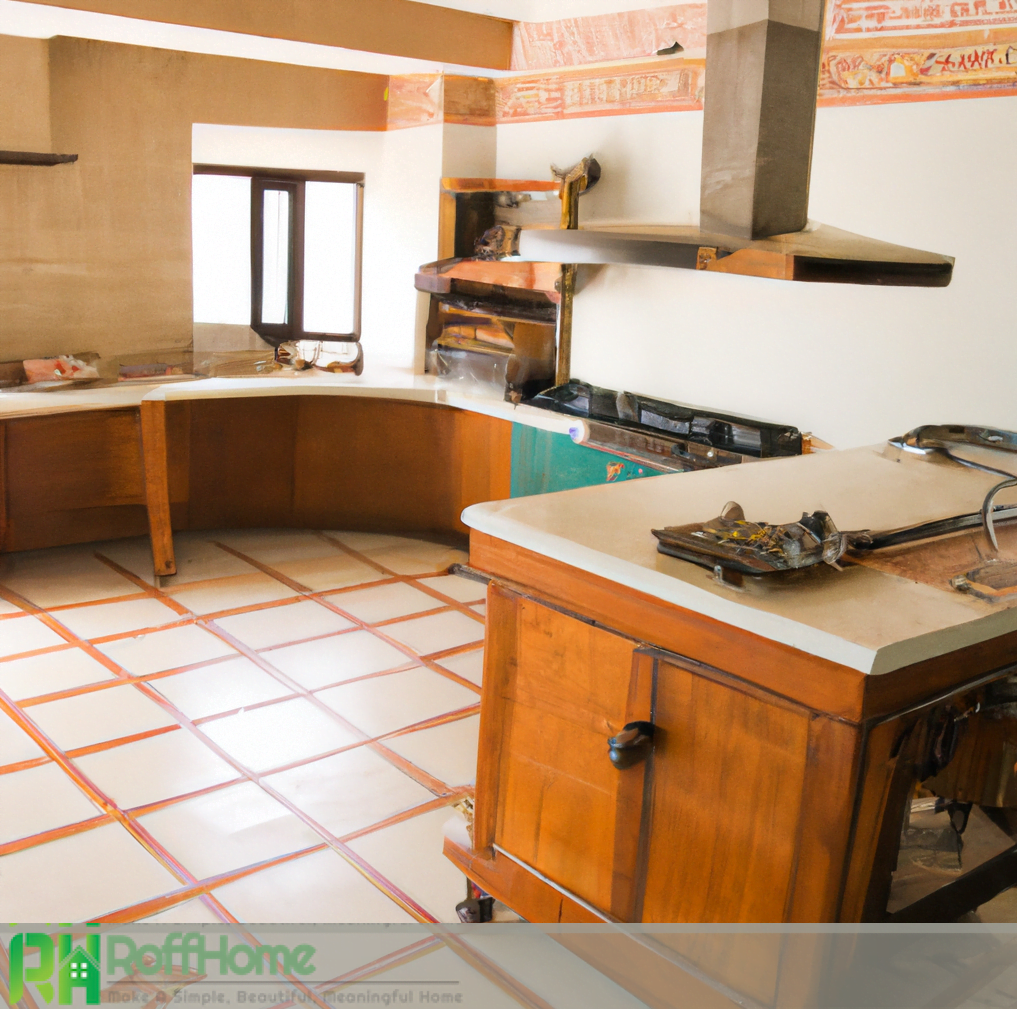
Choosing the Right Terracotta Floor Tiles for Kitchen
Selecting the right terracotta floor tiles for your kitchen is crucial in creating a beautiful and functional space. With various options available, considering certain factors will help you make an informed decision.
One crucial aspect to consider is the color of the terracotta tiles. Terracotta tiles come in a range of earthy tones, including warm reds, browns, and yellows. Consider your kitchen’s overall color scheme and style when choosing the right hue. Lighter shades create a bright, airy atmosphere, while darker tones add depth and richness.
The texture is another crucial consideration. Terracotta floor tiles can have different surface finishes, such as smooth, hand-scraped, or textured. Consider the consistency level you prefer, keeping in mind that highly textured tiles may require more effort to clean.
Size and shape are also essential factors. Terracotta floor tiles come in various sizes and shapes, including square, rectangular, and hexagonal. The size and shape you choose can impact the overall visual appeal of your kitchen. Consider the size of the space and the layout of the kitchen when making your decision.
It is essential to assess the quality of the terracotta tiles before making a purchase. Look for well-fired, durable tiles, and free from cracks or chips. Higher-quality terracotta tiles will generally have a more uniform color and texture.
Consider the maintenance requirements of the terracotta tiles as well. Terracotta is a porous material and may require sealing to protect it from stains and moisture. Ask about the recommended maintenance procedures and the lifespan of the sealer to ensure that the tiles will remain in good condition over time.
Finally, consider the overall style and theme of your kitchen. Terracotta floor-tiles can complement various design aesthetics, from rustic and traditional to Mediterranean or modern. Choose a style that harmonizes with the existing elements of your kitchen and creates the desired atmosphere.
Tips for Incorporating Terracotta Floor Tiles into a Modern Kitchen Design
With their timeless charm and warm earthy tones, Terracotta floor tiles can be successfully integrated into modern kitchen designs to create a unique and inviting space. Here are some tips to consider when incorporating terracotta floor-tiles into a modern kitchen design:
Balance with Contemporary Elements: To achieve a harmonious look, balance the rustic appeal of terracotta floor tiles with sleek and modern elements in the kitchen. Consider pairing the terracotta tiles with stainless steel appliances, minimalist cabinetry, and clean lines to create a balanced contrast between the traditional and contemporary styles.
Opt for Large Format Tiles: Choose large-format terracotta tiles for a modern aesthetic. Larger tiles with minimal grout lines can make the kitchen more spacious and streamlined. This choice also minimizes the busy look that can come with smaller tiles.
Embrace Monochromatic Color Schemes: Create a modern and cohesive look by incorporating a monochromatic color scheme. Choose terracotta tiles in the same color family as the kitchen cabinets and countertops. This creates a unified and contemporary look while allowing the warmth of the terracotta to shine through.
Experiment with Layout and Patterns: Play with different tile layouts and patterns to add a touch of creativity and visual interest. Consider herringbone or chevron patterns, or mix terracotta tiles with other materials like porcelain or concrete for a modern twist. Combining different textures and patterns can create a unique and eye-catching design.
Use Natural Lighting: Take advantage of natural lighting to highlight the beauty of terracotta floor-tiles in the modern kitchen. Position windows strategically to allow ample sunlight to filter in and illuminate the space. Natural light enhances the warm tones of the terracotta and adds a sense of brightness to the room.
Consider Contrast: Introduce elements that create a contrast to make the terracotta tiles stand out. For example, pair the warm terracotta flooring with cool-toned countertops or backsplashes. The difference between the warm and cool hues adds visual interest and creates a modern look.
Keep it Simple:
- Embrace the minimalist approach in a modern kitchen design.
- Avoid overcrowding the space with excessive decor or accessories.
- Let the terracotta floor-tiles be the focal point and keep other elements clean and uncluttered.

Installing Terracotta Floor Tiles: Step-by-Step Instructions for Kitchen
Installing terracotta floor tiles in the kitchen can be a rewarding and visually appealing project. With proper preparation and careful execution, you can achieve a beautiful and durable floor. Here are step-by-step instructions to guide you through the process:
Prepare the Subfloor: Ensure that the subfloor is clean, dry, level, and free from debris. Repair any cracks or uneven areas, and remove any existing flooring materials. It’s essential to have a solid and stable base for the terracotta tiles.
Measure and Plan: Measure the kitchen area accurately to determine the number of terracotta tiles needed. Create a layout plan, considering the positioning of appliances, cabinets, and other fixtures. This will help you decide where to start and how the tiles will be laid out.
Begin Tiling: Start at the center of the kitchen and work your way outwards. Apply a layer of thin-set mortar using a trowel, ensuring even and consistent coverage. Place the first terracotta tile at the center of the room and press it firmly into the mortar, giving it a slight twist to secure it.
Continue Tiling:
- Working in small sections, continue applying mortar and laying tiles, following your planned layout.
- Use tile spacers to maintain consistent gaps between the tiles for grout lines.
- Check regularly with a level to ensure the tiles are even and flat.
Cut Tiles to Fit: You may need to cut tiles to fit as you reach the kitchen edges or encounter obstacles like cabinets or appliances. Use a tile cutter or wet saw to make precise cuts. Remember to wear appropriate safety equipment when using cutting tools.
Allow the Tiles to Set: Once all the tiles are laid, allow them to set and dry for the time specified by the manufacturer. This ensures proper bonding of the tiles to the subfloor.
Apply Grout:
- Mix the grout according to the manufacturer’s instructions.
- Using a grout float, apply the grout over the tiles, working it into the gaps.
- Wipe off excess grout using a damp sponge.
- Allow the grout to cure as per the manufacturer’s instructions.
Apply Sealant: After the grout has cured, apply a penetrating sealant to protect the terracotta tiles. Follow the manufacturer’s instructions for application and drying time.
Clean and Maintain: Once the sealant has dried, clean the tiles with a mild cleanser and a soft cloth. Regularly sweep and mop the floor to keep it clean and maintain its appearance.
Maintaining and Cleaning Terracotta Floor Tiles in the Kitchen
Terracotta floor tiles in the kitchen can add warmth and beauty to the space, but they require proper maintenance and cleaning to keep them looking their best. Here are some tips for maintaining and cleaning terracotta floor-tiles in the kitchen:
Regular Sweeping and Dusting: To prevent dirt and debris from scratching the surface of the terracotta tiles, sweep or dust the floor regularly.
Avoid Harsh Chemicals: Terracotta is a porous material, so it’s important to avoid using harsh chemicals that can damage or stain the tiles. Instead, use a pH-neutral cleaner formulated explicitly for terracotta or a mixture of warm water and mild dish soap. Test any cleaning solution on a small, inconspicuous area before applying it to the floor.
Mopping with Care: When mopping the terracotta floor, use a damp mop rather than a wet mop. Excess water can seep into the tiles and cause staining or damage. Wring out the mop well to ensure it is only slightly damp, and avoid leaving standing water on the floor.
Address Spills Immediately: Terracotta is susceptible to staining, so it’s essential to address spills promptly. Blot any spills with a clean cloth or paper towel to absorb the liquid, and then clean the area with a mild cleaning solution. Avoid rubbing the fall, as it may spread the stain.
Sealing the Tiles: Terracotta floor-tiles should be sealed to protect them from stains, moisture, and daily wear. Consult the manufacturer’s guidelines or seek professional advice to determine the appropriate type of sealant for your terracotta tiles. Apply the glue as directed, and reapply it periodically according to the manufacturer’s recommendations.
Preventative Measures: Place mats or rugs in high-traffic areas or near the sink to protect the terracotta tiles from excessive wear and spills. Use felt pads or protective coasters under furniture legs to prevent scratching or indentation.
Regular Inspections: Regularly inspect the terracotta floor-tiles for any signs of damage, cracks, or deterioration. Address any issues promptly to prevent further damage and ensure the longevity of the tiles.
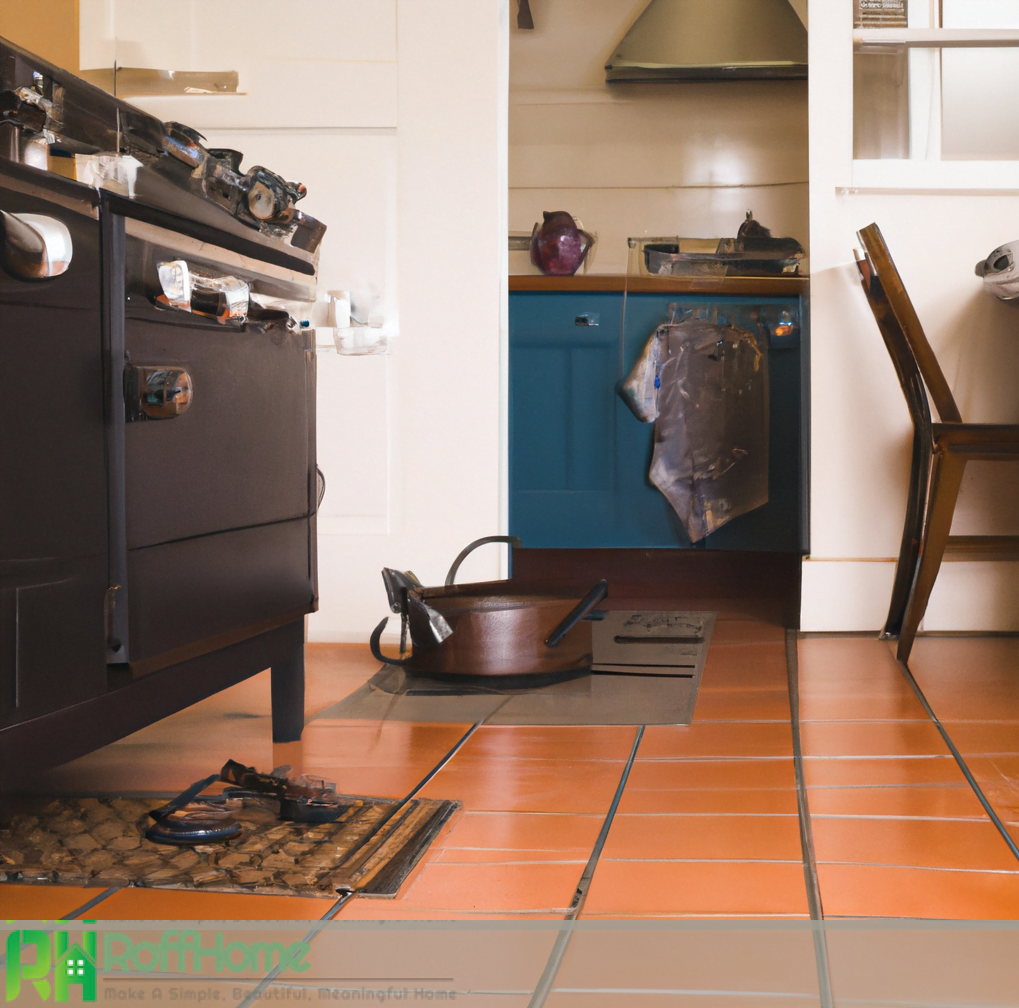
Pros and Cons of Terracotta Floor Tiles in the Kitchen
Terracotta floor-tiles are famous for kitchens due to their warm and inviting aesthetic. However, like any flooring material, they come with their own set of pros and cons.These advantages and disadvantages can help you consider terracotta floor-tiles for your kitchen. Here are the pros and cons:
Pros:
Natural Beauty: Terracotta floor-tiles offer an honest and earthy charm that adds warmth and character to the kitchen. The unique variations in color and texture give each tile a distinct appearance, creating a visually appealing space.
Durability: Terracotta tiles are known for their durability and longevity. Properly maintained, they can withstand heavy foot traffic, making them suitable for high-traffic areas like kitchens.
Timeless Appeal: Terracotta has been used for centuries and has a timeless quality that transcends trends. Its traditional and rustic look can complement a variety of kitchen styles, from farmhouse to Mediterranean, and can add a touch of authenticity to the space.
Versatility: Terracotta floor-tiles come in various shapes, sizes, and patterns, allowing for customization and creativity. They can be arranged in different layouts and combined with other materials to create unique designs that suit your style.
Cons:
Porosity: One of the main drawbacks of terracotta floor-tiles is their porosity. Terracotta is a highly porous material that can absorb liquids and stains more easily. Spills and stains may leave lasting marks on the tiles without proper sealing and maintenance.
Maintenance: Terracotta floor-tiles require regular maintenance to look their best. They must be swept and mopped regularly, and the grout lines may need occasional resealing to prevent moisture penetration and staining.
Vulnerability to Damage: Terracotta tiles can be more prone to chipping and cracking than other flooring materials. They are not as resistant to impact and heavy objects being dropped on them, so care must be taken to prevent damage.
Limited Color Options: While terracotta tiles offer a range of warm earthy tones, the color options are relatively minor compared to other flooring materials. If you desire a broader color palette or more modern design options, terracotta may need to provide more variety.
In conclusion, terracotta floor-tiles in the kitchen offer a warm and inviting aesthetic, durability, and timeless appeal. However, their porosity and maintenance requirements should be carefully considered. Terracotta floor-tiles can create a beautiful and enduring kitchen space with proper care.

